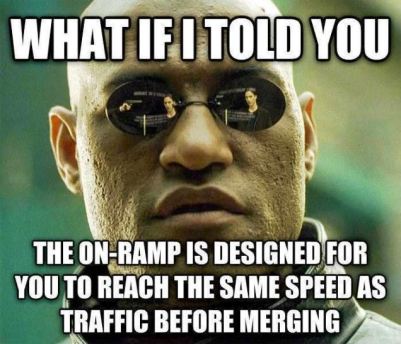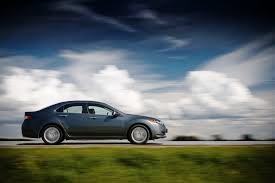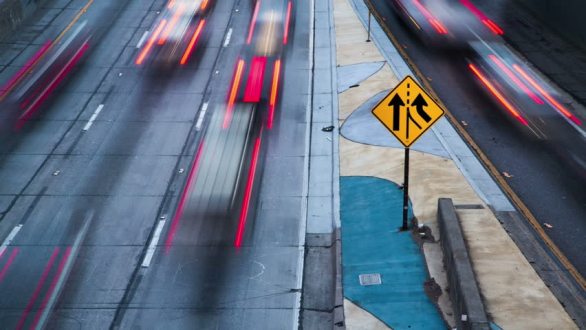I once read that the two least liked manoeuvres in driving are left turns and merging into traffic.
Left turns, I agree, makes sense. There’s inherent danger from exposing your broad side as you cut across the path of oncoming traffic.
Left turns also put you at the mercy of the volume of oncoming vehicles; it can be a long wait before you get a chance to make your move. If you’re a somewhat timid driver, you may fail to take advantage of opportunities that seem iffy, thereby resulting in an intimidating amount of traffic backed up behind you.
Merging, however, is different. You’re not crossing anyone’s path; you’re all travelling in the same direction; you have much more control over the situation, for all that many drivers choose not to exercise that control.
Of the two manoeuvres, I personally dislike merging the most. Not because I can’t do it, but because so few others I encounter on the highway can, which often hinders my own merging ability as a result.
On the road again
This past Easter, I spent time in Ontario visiting family and friends. A portion of that friend-visiting involved a 700-km drive there and back again along Ontario’s famous Highway 401.
I’ve written about this highway before. Over the decade I lived in Ontario, I’ve at intervals driven the “four-oh-one’s” entire 828-km length.
I’ve also driven several other highways, both in Ontario and elsewhere, having clocked a substantial number of kilometers for someone who neither owns a car at present nor ever has in the 12 years I’ve been a licensed driver.
Because of this, I’ve had the opportunity to observe a lot of highway driving, and to use what I see to hone my own technique. I’m not as young as I used to be and as a result, now hit up highway rest stations often rather than cruising straight past in a four-hour uninterrupted haul.
This constant stopping thus increases the amount of merging I must do to get back on the highway.
I could be a driving instructor, I think. I already work in an education-related field and have been told I’m very patient in one-on-one settings.
In the past, I’ve been a passenger to inexperienced drivers who deemed me a very calm and reassuring presence. Meanwhile, a practicum student we had a work once informed me completely unbidden that she best enjoyed riding with me compared to my colleagues, for I conveyed a sense of “safety and control”.
I realize that almost all people believe themselves good drivers, but in my case, I’m convinced it’s actually true. I didn’t get my license until my mid-20s, by which time I was much more mature and receptive to the instruction.
In addition, my disposition in general lends itself well to the task. Under the Myers-Briggs typology, in the information-processing dichotomy, I am an “S” (“sensing”), which leads me to notice the finer details of everything I see and do, particularly when there’s room among those fine details for improvement.
To wit, how to be better at merging:
1) Drive faster on the on-ramp
 Regardless of whether you’re entering a highway via a municipal on-ramp or transferring from one highway to another via a junction, nine times out of ten, people struggle with merging because they’re driving too slowly.
Regardless of whether you’re entering a highway via a municipal on-ramp or transferring from one highway to another via a junction, nine times out of ten, people struggle with merging because they’re driving too slowly.
I see this over and over again: the car in front of me on an on-ramp will be doing 60 km/h while the traffic we’re trying to merge into is travelling nearly twice that. Such a huge differential in speed makes the job nearly impossible to do smoothly and calmly.
(I know this because whenever I get stuck behind a car going 60, even if I manage widen the gap between us enough to get myself up to 80, my resulting merge generally still is neither smooth nor calm.)
It might seem counterintuitive and even kind of scary to drive faster on a rapidly-ending piece of road. In practice, though, the faster you go, the slower the adjacent highway traffic will appear to be travelling by comparison.
In addition, getting up to speed makes it possible to merge into smaller space between vehicles on the main highway. Which brings me to my next piece of advice:
2) Merge sooner rather than later
I see a lot of people waiting until the on-ramp actually ends to make their move over into the main flow of traffic.
This might not pose any problems on a relatively empty highway, but it’s generally not a good practice to get into.
Why wait? The very first opening that presents itself is the one you should take. Murphy’s Law being as it is, the closer you get to the end of the merging lane, the less likely you are to find a gap to merge into.
This will require you to either brake (thereby violating tip #1); to drive on the shoulder, which is much narrower than the road and often unpaved and thus insufficient for driving at speed (again violating tip #1); or to force your way over into traffic, which, at best, will earn you a blare from someone’s horn and at worst can injure or kill someone.
What’s more, if you take your sweet time merging while the cars behind you on the on-ramp get over right away, those same vehicles will now be positioned precisely where you want to go, and they might not (or mightn’t be able to) to make room for you.
3) Don’t slow down after completing your merge
This is a really annoying, and frankly, dangerous habit a lot of drivers have.
Even if you merge at a decent speed, you’ve just moved into the buffer zone between the car behind you and the one that was previously in front of it. This means the car behind you now has a shorter braking space and needs to have faster reaction time to avoid piling into the back of your car.
 I think it’s a pretty safe assumption that no one wants to be rear-ended at 120 km/h. The good news is that it’s largely avoidable: after merging, simply increase your speed to match the flow of traffic and allow the normal spacing between cars to reform.
I think it’s a pretty safe assumption that no one wants to be rear-ended at 120 km/h. The good news is that it’s largely avoidable: after merging, simply increase your speed to match the flow of traffic and allow the normal spacing between cars to reform.
And there you have it; three easy tips to make your merging easier and safer. But inefficient merging isn’t the only bad driving I observe on the highway.
A few more tips:
- Stop hogging the left-hand lane(s). These are supposed to be for passing. If you’re just hanging out in those lanes, you’re preventing drivers who want to pass from doing so, thereby hindering the flow of traffic.
- Pass vehicles quickly. Passing can be dangerous, particularly in the case of 18-wheelers, which can blow tires or veer unintentionally outside of their lane. Get passing over with quickly and be on your way rather than jamming up the passing lane(s). Be sure to get back into the right-hand lane when you’re done.
- Avoid braking unnecessarily on the highway. Unless the vehicle ahead of you is slowing down significantly or actually coming to a stop due to gridlock or roadwork, having to brake on the highway most likely means you’re following the car ahead of you too closely. By leaving a space of three car-lengths, you’ll be able to slow down when necessarily by merely easing up off the gas.
- Blow your air conditioner on your windshield to prevent fogging. I see a lot of cars with windows down on the highway. Not only is that hell on your fuel efficiency, the wind makes for a very noisy and high-pressure cockpit. Even with the A/C on, you can dial up the temperature gauge to keep the car nice and toasty inside.
- Don’t be on your phone while driving. This should be a no-brainer but I still see it all too often. At highway speed, you only need glance away from the road for a second to cause a serious accident.
Do you consider yourself a good driver? What bad driving do you see? What tips do you have to prevent it? Tell me about it in the comments.
(Image source #1, #2, #3, and#4)



#4 If you’re already on the highway and approaching the merger point, get out of the inside lane if safe to do so, allowing others to enter easily.
Here in Jersey (C.I.) we have a speed limit of 40mph (as well as 30mph & 20mph zones) so it’s fun picking up a hire car at an English airport and getting onto your first motorway (correct name 😉 )
LikeLike
Haha, yes – the motorway. As both a Canadian and someone who has English relatives, I’m well familiar with the term and wouldn’t dream of saying “highway” (or “freeway”, which I believe the Americans use as well) while on the other side of the Pond.
Regarding the moving over a lane: I debated including that in the original post – because I do often do that – but ultimately didn’t, because in a perfect world on the road, I don’t believe it would be necessary.
On a highway like the 401, especially while crossing Toronto, there is an on-ramp every 2-3 km, which means you’d be shifting lanes constantly. Either that or just staying in an outer lane. However there is already so much unnecessary traffic out there, slowing everything down and requiring even more lane shifting.
I personally like keep to the right-hand lane as much as possible because it’s the safest lane. When approaching an on-ramp, I judge the speed of the merging car and either ease up or speed up accordingly so it can either go in front of me or behind me. If everyone did this, moving over would be necessary far less often.
LikeLiked by 1 person
Merging was the scariest thing to supervise the kids doing after the driving instructors we paid for finished their short course. The concepts of getting up to speed and going with the flow are hard!
LikeLike
It is hard. I remember learning it myself – all the cars seemed to be moving so fast (speeding up really is the key). I was white-knuckling that steering wheel (quite a feat for a black person) and my early lane changes were so abrupt, I risked giving my passengers lateral whiplash! Alas, as in most things, I improved with practice.
LikeLiked by 1 person
We all have; my kids have improved, anyway. I did – and I keep bragging that I learned to drive a stick shift in Mexico City – beat that!
LikeLike
Haha, I can drive stick, but you still win!
LikeLike
I do NOT like driving. But I was nodding my head at all points, because these are the reasons I don’t like driving. Not because of the act of operating the vehicle, but because I’m waiting for someone to kill me. ^_^
LikeLike
Not everyone likes driving. I do, but always try to drive in a manner that lends itself to first anticipating and then preventing accidents and harm to others and myself.
LikeLike
Appreciated!
LikeLike